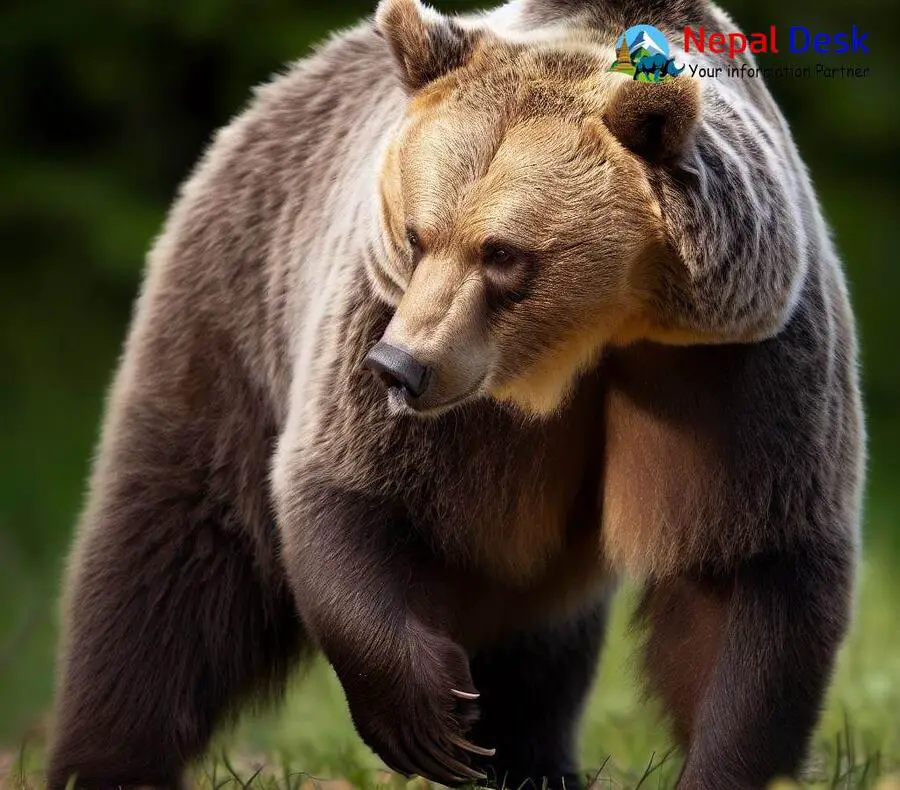
The Brown bear (Ursus arctos) is a large carnivorous mammal belonging to the family Ursidae. They are widely distributed across the Northern Hemisphere, and in Nepal, they are primarily found in the higher-altitude regions of the Himalayas. Brown bears have a thick fur coat that varies in color from dark brown to light blond, which helps them to adapt to extremely cold environments. Males can weigh up to 400 kg, while females weigh around 200 kg.
Brown bears are primarily solitary animals, but they may congregate in groups near abundant food sources, such as salmon rivers or berry patches. They are omnivorous, and their diet consists of a variety of food items including berries, roots, nuts, insects, small mammals, and fish. In Nepal, they are known to feed on livestock and crops in some areas, which often brings them into conflict with humans.
Brown bears have a slow reproductive rate, with females typically giving birth to one or two cubs every two to three years. Cubs are born in the winter den and stay with their mother for about two years until they become independent.
The brown bear (Ursus arctos) is found in the high-altitude regions of Nepal, particularly in the western and central Himalayas. They prefer areas with dense forests, alpine meadows, and rocky outcrops. In Nepal, they are mostly found in the Annapurna Conservation Area, Langtang National Park, Makalu Barun National Park, and Kanchenjunga Conservation Area.
Brown bears are omnivores and their diet varies depending on the season and availability of food. They feed on a variety of plants, including grasses, roots, berries, and fruits, as well as insects and small mammals. They are also known to prey on larger animals like musk deer, wild boar, and even domestic livestock.
Breeding season for brown bears in Nepal is in late spring or early summer, with cubs born in the winter den. Females give birth to one to four cubs, with two being the average. Cubs stay with their mother for up to three years before becoming independent.
The brown bear belongs to the family Ursidae and is one of the largest carnivores in the world. They are classified as vulnerable species by the International Union for Conservation of Nature (IUCN) due to habitat loss, poaching, and human-bear conflict. In Nepal, the brown bear is protected under the National Parks and Wildlife Conservation Act of 1973, and it is also listed in the CITES Appendix I. Conservation efforts in Nepal are focused on reducing human-bear conflict and preserving their habitat.
